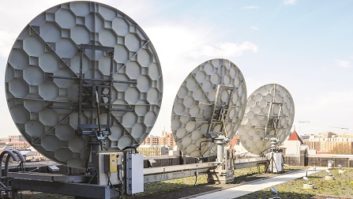The author is founder of engineering consulting firm Communications Technologies Inc.
Many broadcasters believe that construction of a radio tower is a matter requiring only FAA, local and possibly state approval prior to commencing construction.
When they learn that the FCC has very specific environmental assessment requirements that must be completed before the construction permit can be granted, the unplanned cost, potential complications and delay are never welcome.

Your investigator must meet the Secretary of the Interior’s Professional Qualification Standards. The purpose of this article is to explain the process so that it is not a surprise and, in fact, can be incorporated into the schedule and budget from the beginning.
The good news is that often the local approval process requires some of the same studies that are required by the FCC.
Checklist
What is the FCC looking for? First, that the investigator answering the questions below meets the Secretary of the Interior’s Professional Qualification Standards. (See them online.)
Then if the investigator is able to answer “No” to each question below, no further investigation is required for FCC environmental purposes.
If any of the questions have a “Yes” answer, an environmental assessment must be completed and filed with the FCC. No construction may begin until the FCC has reviewed the assessment and approved the proposal.
The questions requiring “No” answers:
- Will the facility be located in an officially designated wilderness area?
- Will the facility be located in an officially designated wildlife preserve?
- Will the facility affect federally listed, threatened or endangered species or designated critical habitats or is the facility likely to jeopardize the continued existence of any federally proposed endangered or threatened species or likely to result in the destruction or adverse modification of federally proposed critical habitats?
- Will the facility affect districts, sites, buildings, structures, objects or other cultural resources listed, or eligible for listing, in the National Register of Historic Places?
- Will the facility affect Indian religious sites?
- Will the facility be located in a flood plain?
- Will the construction of the facility involve a significant change in the surface features (e.g., wetland fill, deforestation or water diversion)?
- Will the antenna tower and/or supporting structure be equipped with high-intensity white lights and be located in a residential neighborhood, as defined by local zoning laws?
- Will the proposed facility fall outside the categorical exclusions contained in Table 1 of 47 CFR Section 1.1307(b)(1) and potentially cause exposure of workers or the general public to levels of radio frequency radiation in excess of the emissions limits set forth in Section 1.1310?
- Will the proposed facility be constructed within one mile of the centerline of a National Scenic Trail and has the Trail Management Office indicated that the proposed construction will have a significant adverse effect?
In order to answer these questions properly, the investigator typically will visit the site, then submit a site plan to the State Historic Preservation Office (SHPO) and go through the Tribal Notification process available through the FCC website.
Teamwork
Investigators (environmental consultants), like all professionals, are not always equal in terms of price, turnaround time and experience.
You can control your costs by encouraging your environmental consultant, FCC attorney, consulting engineer, local land use attorney, civil engineer and chief engineer to share information and work together as a team. You will find that both your FCC legal counsel and consulting engineer will have worked with multiple environmental consultants and can direct you to a firm they know and trust.
The environmental research is not always straightforward. Knowing when a SHPO or tribal group is asking for more than what is appropriate takes experience and good negotiating skills.
The FCC Audio Division staff reviews every application for new tower construction to confirm that the National Environmental Policy Act, or NEPA, requirements have been met before a construction permit is granted.
Note that the FCC, as a federal agency, must uphold the requirements of the Declaration of National Environmental Policy created by the federal government; the regulations were not created by the FCC itself.
Members of the FCC Audio Division Supervisory Staff were kind enough to offer guidance for AM and FM broadcasters in regard to the filing of an application for construction permit involving tower construction:
- • Take a few minutes to review the information found at wireless.fcc.gov/siting/EA_checklist.pdf to understand what the environmental process is all about.
- • Check “yes” for the box saying that the proposal will not have a significant environmental impact and complies with OET-65 Guidelines. Do not add qualifying language regarding environmental impact. Do not submit a copy of the environmental consultant’s environmental analysis.
- • Applicants are cautioned not to check “yes” if the environmental analysis has not been undertaken. Tower construction is a hot topic in many sectors of society including the bird community, historic preservation and groups that oppose towers due to visual impact or an expectation of lowered property values. These organizations watch for opportunities to file a petition to deny or informal objection that can delay application processing or result in a CP grant being rescinded, at a minimum. Checking the “yes” box without having undertaken the requisite environmental analysis could leave the applicant open to sanction for false certification or misrepresentation.
Clarence Beverage has been with Communications Technologies Inc. from its inception in 1985. Questions are welcome and may be directed to [email protected].












